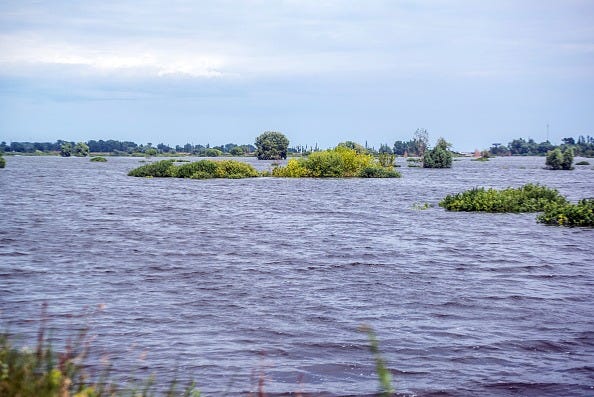Good for Beavers, Bad for Russia
In 2022, Ukraine blew up the Kozarovychi Dam to stop the Russians. Now, Europe wants to copy this strategy — turning wetlands into defenses.
Featured Reader Comment:
I am very proud to support The Counteroffensive team, and appreciate all the work you do to share the realities of living in such perilous times. I use the tip jar to help pad that subscription, because we need to offer the best protection we can while you support our understanding of the conflicts in action.
–Ann Starkey

Blowing up the Kozarovychi Dam was an unlikely chess move.
But in the frantic days of February 2022, it was the last option to stop the Russian advance.
The first blast was a tragic failure: the water barely flowed. The Russians, realizing the Ukrainians’ intentions, began shelling the area. Ukrainian forces quickly prepared another attempt.
The second blast found more success: water began to flow into the low-lying areas surrounding the Irpin River. Soon, flooded wetlands stood between the Russian mechanized advance and their desired target: Kyiv.
“It was an incredible stroke of luck,” Oleksandr Karpiuk, a marine reservist charged with detonating the dam, told The Counteroffensive. “I wasn’t supposed to survive there.”
Turning to a centuries-old battlefield tactic — using natural resources to thwart an enemy — Ukrainian forces stalled the Russian advance.
With Russia’s recent provocations against NATO, European countries are preparing for various scenarios, including a Russian land invasion – and they’re looking to Ukraine’s example.
Over the last few months, Poland and the Baltics are openly discussing plans to flood their borderlands or strategic low-lying areas to protect against a future attack.
And as they learn from Ukraine, they are finding that the measures may not only defend against Russia but could help with climate change and the local ecology.
After the paywall:
How Kyiv defenders risked their lives to blow up the dam;
What consequences it had both for nature and the war
How Europe can benefit from preparing similar tactics in advance
Keep reading with a 7-day free trial
Subscribe to The Counteroffensive with Tim Mak to keep reading this post and get 7 days of free access to the full post archives.



